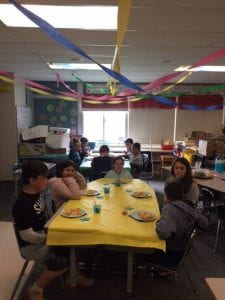World Kindness Day deserves a post from kids about the word ‘kindness’. No post from me, just watch and you will likely learn more than just the meaning of kindness. They do such good work!
*Valentimes or Valentine’s???
My small group of grade 5 students entered the classroom with this on the Viewsonic screen:
As they settled in for the half hour session, they began to talk about this image. Today being Valentine’s Day, one student quickly surmised that we might be looking at a matrix about words that make <valentine>. However, what she said next stopped me in my tracks, causing us to consider a whole new aspect of the matrix I was about to explore with them. This student said, “I don’t see ‘times‘ in that matrix so we must not be studying *Valentimes.” I thought we were going to be building (synthesizing) words using morphemes from this matrix, but instead, we took the lead from my student to dive into misheard and misunderstood words. In various circumstances, I’ve often said,
“What we hear is not always what we see!”
In other words, our spelling system’s well-ordered structures may be masked by the spoken syllables or auditory processing and she just confirmed it. So we hypothesized the morphemes she thought were in this word and discussed possible meanings of <times> and those potential relationships with our word <valentine>. We then concluded that neither meaning of ‘time’ is related to our word.
The student then focused on the first morpheme, <*valen>. She compared that to the base written on the screen <vale> and said, “Vale does not have the <n>!” We are still working on spelling out elements instead of reading them as a whole unit, but I let that go as it was not the focus of this clump of understanding.
“You’re right!, there isn’t an <n> in <vale>” I said, “What do you make of that?” Interestingly, she did not say what I thought she was going to say. Instead she said, “Which means this word isn’t related to <vale> which is why I don’t see times.” Hmmm… I pondered. At this point, another student had popped up to kindly but admonishingly remind her not to be a smarty-pants. This prompted me to remember something I’m shocked I’d forgotten to get out for the past 5 months!! I said, “While she isn’t exactly on target with that statement, she does deserve to hold onto this poster. We are all scholars in this room because you notice things about words. Whether she’s right or not, by her sharing her thinking out loud, I now know what it is and can help clear up things she’s confused about or be able to tell her her thinking is spot-on.”
As I handed the poster to one student, I asked him, “Who is a scholar?” He smiled, sat up straighter and said, “ME!” In turn, we asked each of the students the same question, passing the poster until all had recognized him/herself as a scholar, landing with the student who had been sharing her thinking. This small moment is powerful. It let’s kids know that we don’t always have to answer correctly, we can simply notice things and then begin to learn even more. It frees them from the confinements of the fear of being wrong.
Back to the student’s interesting statement in which she claimed her hypothesis of <valen> was not the word we were studying on the screen. I expected her to tell us that her hypothesis was not correct because the base on the matrix on the screen was <vale>. Why would I make this assumption? I had given her no evidence. I simply anticipated she’d make the connection. When the students aren’t getting it, it isn’t them, it’s the teaching. Seeing this perspective allows me to ask productive questions instead of making a judgement of surprise that she didn’t get it. Judgements, however small, can have big implications on a student’s willingness to risk answering or expressing themselves. We went on to observing the matrix on the screen again — I highlighted the morphemes on the matrix that we use, then wrote a word sum to synthesize:
vale/ + ent + ine –> Valentine
We then discussed capitalizing this word since we are referring to it as the name of a holiday. Once students saw this connection, it led to a discussion about how syllables, which are spoken units, can mask or hide the connection in meaning and can be mushed in our auditory processing, causing us to hear words or syllables differently. I gave a few examples from my own kids — one mispronounced chocolate /ˈtʃɔk lɪk/ which, in case you aren’t familiar with IPA symbols, it sounded like “chaulk lick”. Another one of my kids, who as an adult still has trouble pronouncing correctly, says ‘ornament’ as /ˈoɹ dʌ ˌmənt/ which replaces /n/ with /d/. We mentioned the relationship of ornament, ornate and adorn and as we did so, the adult parapro in my room was audibly stunned — she informed us that she has always pronounced it like my daughter and was shocked by this new understanding. There was joy on her face as she processed this. There is huge value in kids seeing adults learning right along side them. Sometimes it’s me learning with them, sometimes it’s a parapro, an ESL interventionist, other students or even their teachers when they go back to class with new nuggets of information. We showed how the spelling remains consistent, even though we may pronounce them differently. We also practiced the phonetics of saying /m/ and /n/ and feeling the air pass through our nasal cavity. This helps us understand how easy it is to mix these two sounds up as they are the only ones that do that. We found the difference is where our lips meet for /m/ and that they are open with /n/. When you say /n/ in a word like Valentine, the first <n> is not a clear /n/ with the tongue touching the alveolar ridge the same way as the final <n> does. Knowing the spelling of the suffixes <-ent> and <-ine> can help us far more than sounding this word out. We also learned that there is no suffix <*-emt> or <*ime> so even if we can’t sound it out, we wouldn’t use an <m> in this word.
After this discussion, I set the students free to create word sums on the board, using morphemes from the matrix on the screen. The only catch, was to create words that they could use meaningfully in a sentence. Afterward, we analyzed each of their word sums to see if it made a real word and to see that they applied any necessary spelling conventions. A couple of the students needed more individualized help to remember to write morphemes that are in line with each other on the matrix (cannot skip a box, can only read/work the matrix left to right). The others were independent. One made a word that wasn’t real but tried very hard to make a sentence with it anyway, fun to see her try and realize she had to concede to making a word she understood. Below are a few examples of some of the words the students created:
I want to highlight the word sum, written in purple marker, because this student worked out the Replace the <e> Spelling Convention by annotating her thinking underneath (V = vowel suffix; SSF = Single, Silent, Final <e>).
The second student who followed the matrix and wrote: equ + i + vale/ + ent –> equivalent, did not know its meaning so we discussed it and drew some quick images to help her understand it.
Time was running very short so we ended the lesson but the lesson did not end there. As the students lined up to go back to their regular classrooms, I heard a few of them saying they were so surprised that there wasn’t an <m> in Valentine and that they couldn’t wait to tell someone else.
Happy Valentine’s Day!
Is It Really Just Sometimes?
How many times have you heard or uttered the phrase: “<a, e, i, o, u> & sometimes <y>”? Countless times I imagine.
Several of my elementary groups recently finished a quick holiday Vowel Hand wreath project by tracing their hand, writing each of the vowels on the fingers and a <y> on the palm of the Vowel Hand. This project was inspired by a post from Rebecca Loveless in the Structured Word Inquiry Facebook Group. She had posted a picture of a teacher’s Vowel Hand Wreath with that particular phrase written on it. Interestingly, she noted in her comments that it really should say “…most of the time <y>” to which several people agreed, including me.
When I showed the picture to my students so they could see what we were going to make with our cut-outs, they knew immediately that we would change the saying to “most of the time <y>” because we have said this dozens of times by this point in the year. A couple of students were curious about the use of two different phrases. They had seen plenty of examples of <y> functioning as a vowel far more often than they’d seen examples of <y> as a consonant. They wondered why anyone would say “sometimes <y>” when it was clear in our work, that it simply wasn’t the most logical choice. After discussing that sayings tend to sound catchy (they agreed that “sometimes <y> rolled off the tongue a bit better than “most of the time <y>) and that people tend to follow what they read in books or hear in their university classes or professional development. This saying has been around for decades, so we decided that people just went with it, didn’t think about questioning it. However, the students felt there was a more informative way to convey the job of <y> in our language. Continue reading
Understanding Etymology/History Sparks the Teacher in a Student
What a great year to begin teaching about spelling through the lens of Structured Word Inquiry (SWI) — this year we have several new resources to use that will help spread the awareness of the sense and meaning of the orthography of the English language!
First, we have this wonderful resource that helped a student, Sam, understand the reason for the spelling of ‘the’ — we used this new resource from Fiona Hamilton and Rebecca Loveless called The High Frequency Word Project (link). In this resource, they have short activities for students to do while learning how to spell words and learn about their histories — their stories. Sam loves history and has difficulty learning the spelling of words. He was so excited to learn about the histories of many words. One day, after using this resource for about a week, he proclaimed:
“I love history, and I know I can learn how to spell and read words when I know their stories! Everyone should love this stuff!”
This resource will help Sam and his classmates associate the spelling with an interesting story — the best way for many people to learn, especially those with learning challenges. How wonderful that the students will also use opportunities to learn how to express their learning with each other and with a broader audience as well!
Watch this short video (1 minute 30 sec) of Sam explaining the etymology of the word ‘the’ that he learned from The hfw Project and Etymonline.
March On In to Word Studies with “Shamrock”!
Nearly 365 days ago I did a thing that I forgot about. I made a video of a word study that my students and I had begun investigating at the beginning of March 2020. The pandemic had just shown it’s ugly face and lives all around the world were turned upside-down. At the time, we had just been sent home to try to figure out quarantining while teaching from home. We worried about the health of our children, our families, our students, friends, neighbors, even strangers. We had no idea how long the shut-down would last. We hoped it might only be a few weeks or months at the most– it was unfathomable. Nearly 1 year later, so much in our world has changed and yet we all try to do as many familiar things as we can to bring back a sense of what used to be, our norm. Our school just kicked off March Is Reading Month and soon it will be St. Patrick’s Day.
As I began thinking ahead to St. Patrick’s Day, I kept feeling like I’d forgotten something. I checked for my keys and wallet multiple times over the past few days. Finally, at the end of the school day today, it hit me — I had made a St. Paddy’s Day word investigation video last year!! I quickly searched my blog, but did not find it. I searched both of my YouTube channels, but did not find it. I searched my laptop and school computer hoping to find the video — no luck. Then dread set in as I recalled that the piece-meal computer system I had been using at home last year, which had suddenly been thrown into being overworked, died after a few weeks of teaching from home. Oh no! I sure hoped it wasn’t on ‘Ole Bessy, her memory left before she even knew it was gone. I vaguely recall several people commenting about how much they liked the video, that it had clearly demonstrated all four of the Essential Questions of SWI, so I must’ve posted it in my Facebook Group for Structured Word Inquiry at some point…..but where was the actual video file??
Finally, I remembered to check my Zoom account recordings!! Oh, thank goodness! While organization has never been my strong suit, especially abstract computer files– this past year has been challenging to say the least– finding time to create lessons for a virtual setting took all the available time I had. Besides, I totally own my disorganized filing systems– it just isn’t in my wheel-house. I secretly feel giddy & satisfied when someone shares the meme that a messy desk is the sign of a genius (and stick my nose up at the meme that says an organized person is a sign of a genius –wink, wink!). I digress. At last, I have found it and done so in time for this year’s St. Patrick’s Day studies — I feel so relieved!
This video lesson takes you through an investigation started last March by one of my students who quietly wondered aloud if shamrocks shared any relationship to real rocks. Students in my classes are not shy about asking questions about potential relationships because they know we can find the answer and that they will learn something even if their thought or question ends up inaccurate. I’m amazed at the questions they ask or the mutterings they verbalize even when they don’t realize they’ve asked them aloud! I often wonder how much confusion my previous students kept hidden in their too-afraid-to-ask minds before I taught SWI, that saddens me a bit.
I much prefer to relish in the joy of kids sharing what makes them curious.
My favorite mentor has a saying we have posted in our classroom, “Scholars are people who notice things” (and thanks to my friend, Mary Beth, we have an actual poster of that instead of having it scrawled in my handwriting on a piece of butcher paper!).
What happens when kids share their curiosity or their hypothesis about a word? First, let me tell you what does not happen; students do not hear, “Rocks, why would you think rocks is related to shamrocks?” nor “What? No! We don’t have time for that nonsense.” OH NO, SIR!!
Instead, they hear,
“hmmmm… I’m not sure, what makes you wonder about this?” and
“Let’s go find out!”
Sometimes, we don’t get to the other lesson I had planned (but don’t tell my boss!); sometimes, the word is put on a Wonder Wall of Words We Are Curious About; sometimes, students investigate these on their own; sometimes they don’t; sometimes I squeeze out a few extra minutes to lead an investigation. In any case, they learn an awful lot about the sense & meaning and the structures of the language they speak, hear, read and write every day. They apply that knowledge to read with higher accuracy, at faster rates and most importantly, with higher comprehension. They write and spell with more accuracy and fluency. Even more than that, they remain curious and learn to think critically, knowing they need to find evidence to back up their hypothesis about a word sum or a related word. This takes time. How much time? It takes the time it takes. Nothing is lost, only gains are made. They may momentarily depart from the lesson-at-hand but they will learn far more than the lesson-at-hand.
When we study one word, we almost never only study one word.
The result is often one, two, three or more additional rabbit-holes/branches/paths/meanderings/jaunts/you-name-its……and it’s wonderful, scholarly and addicting!
I hope you enjoy learning about the history and relationships of the word shamrock and the many other words we encounter in this video. There are 2 parts — after minute 15 or so the initial work with shamrock is finished. But why stop there? There is a second part that may surprise you even more. Happy March Is Reading Month and Happy St. Patrick’s Day 2021!
Inauguration 2021
Wednesday, January 20, 2021 marks another turn of presidents in the United States of America. This post is a near carbon copy of the post I did back in 2017 for that year’s inauguration. The PDF of the Slideshow lesson has been updated to reflect the incoming inauguration ceremony of Joe Biden with Kamala Harris as Vice-President. There is no political information on these slides, they aim to bring clarity to the word “inauguration”, to help us understand why this word is used for this ceremony.
January 20, 2021 is an historic day in America, we inaugurate our new President, Joe Biden. While attempting to give my students a deeper understanding of this ceremony, it led to some interesting investigations.
Inauguration_Slideshow 
This is a slideshow I created with my students as we analyzed the word “inauguration” and investigated the trails it led us on. These investigations helped us understand the etymology (historical origin) and the structure of this word along with the many others it is related to….
“You buy one base and you get plenty more for free!”
(said by an SWI friend–Ann Whiting, it’s a great motto).
Historically, an augur is someone who prophesies good things to come. It was said that an augur based his predictions on the behavior of birds which may have led to an increase in crops at that time. An augur was someone who paid attention to nature, who noticed when the behavior patterns of these aviaries changed and one who noticed what occurred around him. He may have been very intuitive to pick up on the tiny clues and was able to predict when it was a good time to plant or harvest crops based on the behavior he noted in the birds.
We talked about how we use this in modern times……even without the aide of television, radio and internet weather channels, we can still notice the behavior of the birds and make predictions today. When I see 20-30 birds anxiously vying for position at the feeder on my deck on a sunny, winter day, my first instinct is to think they are hungry and need us to put more seed in the feeder. Upon closer inspection, the feeder is full. I wonder, “What’s up with these birds who act like it’s their last meal?!?” An hour or two later, I notice that it isn’t as sunny anymore, big, fluffy clouds are moving in and the air feels a bit damp and chilled. I begin to wonder if we are going to get a snow storm; in that moment, I am a bit of an augur predicting the coming storm. I check the weather report and sure enough, 2-4 inches of snow are due by early evening. Our little feathered friends were fattening themselves up for the rest of the day so they could huddle in their nests during the storm.
Historically, I’m certain some people were better at noticing things in nature and predicting when it may be a good time to plant crops or increase the harvest before an early winter set in. People with that sense and skill were regarded highly because of their ability to make nature-inspired good predictions that may bring good things to a village. Ceremonies, inaugurations were held for all to come and listen to these prophesies that were based on good omens, the augur noticed.
So, how is the modern-day use of this term relevant to its historical use? The bound base <augur> retains its denotation of “predict, foretell, seer” with the idea of bringing an “increase” or goodness of some sort (denotation of <aug>).
When a new president is sworn into office, he takes an oath,
he makes a promise of goodness and truth
to the American people during an inaugural ceremony.
We also use the word, augur in examples such as these: Based on the team’s winning streak, he augurs winning the title. or Banks are auguring it is a good time to invest in the stock market. However, we also discovered what it is NOT—see the slide show for that little nugget!
We can synthesize (build) words using the bound base such as:
augur + ed –> augured
in + augur + ate –> inaugurate
in + augur + ate/ + ion –> inauguration
in + augur + ate/ + ion + s –> inaugurations
How is <aug> a bit different? It was difficult to determine if these shared a historical root based on the etymology which used words such as perhaps, presumably originally, probably, when describing the history.
I can find 2 Latin roots associated with these 2 bound bases:
- augurare (denotation “to act as an augur, predict) and
- augere (denotation “increase”).
Latin had suffixes that were removed when these came into English (-are, -ere) which leave us with bound bases of <aug> and <augur>.
A bound base is a base element that requires an affix (1 or more)
in order to surface as a word in English.
<aug> is in words such as augment, augmentation, and August (I’ll let you discover the story behind that one–click here)! An augmentation device is one that increases one’s ability to do something. We can synthesize words with this bound base such as:
aug + ment –> augment
aug + ment + ing –> augmenting
The Latin root augere, is even related to words such as auxiliary (increased support); auction (a sale of increased bids) and author (go look this one up, here)!! Such intriguing quests….the best quests are those that you go on to seek answers but end up with more questions!
View the slide show (above) to see both lexical word matrices, word sums, as well as what it is NOT! All because we wanted to learn more about the historic event that happened this afternoon in our nation’s Capitol!
If interested, scroll through this blog to January 2017 to see the original post and slides from 2017.
Pronoun Performances!
Audio Recording of Pronoun Performances
“Words are just words aren’t they?” was the question one young person asked during a recent lesson about Parts of Speech.
Words can appear to be basic commodities when in fact they are much more than basic — they, along with punctuation, give our writing definition, character, style and most importantly, sense and meaning. If we use them properly, then what we write will convey a message, story, directions, feelings, and much more.
How do words become more valuable to students? By helping them form a deeper understanding of them and their grammatical functions. So, we study words and we study the structure of sentences. Continue reading
Fun with Fish In A Tree
Quick pics of our fun and festivities as we celebrate the culmination of reading the wonderful novel, Fish In A Tree by Lynda Mullaly Hunt.
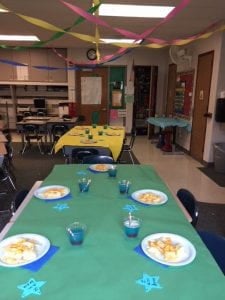 The tables are set, we are ready to dine!
The tables are set, we are ready to dine!
Fish ‘n Chips, ocean blue juice with fish
A personal precept to remind ourselves that we are brave and can handle challenges.
Swim fishy, swim! 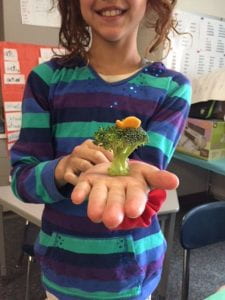 Creating her very own Fish in a Tree!
Creating her very own Fish in a Tree!
Tell us about your favorite part of the story:
- “My favorite part was that Ally made new friends.”
- “When she learned to read!”
- “My favorite was when her brother got his car and they called it Pickle!”
- “I like that she realized that she could change her attitude and it changed everything.”
- “I liked it when she won over the mean kids and got them to like her and leave Shay.”
- “My favorite was when she got a new teacher, Mr. Daniels.”
- “I liked when she felt good about herself.”
- “I liked when she didn’t feel like everything was impossible anymore.”
- “I liked her Sketchbook of Impossible Things, she draws good!”
- “My favorite part is when Keisha is always brave.”
Are We Cemented in Common Practices?
“Common cement,” uttered by a young 7th grade student took my breath away.
We were analyzing words, phrases and sentences from a novel he was reading that had been giving him difficulty in understanding details in the story.
He had been reading a story about a young couple from his hometown set back in the late 1940’s, early 1950’s. He understood most of the plot and setting well enough but some of the details were fuzzy or downright confusing. As he read about this young couple who were going to a “Commencement Dance” he became confused. He thought they were headed to an event of some kind but didn’t know the meaning of the word “commencement”. Once he landed on this word, which he attempted to sound out using syllabication skills taught in previous years, he read it as, [ˈkɑmən sə ˌmɛnt]. He read this in a hurried kinda-way since he was not confident with his pronunciation of the word and he had no idea what common cement and a dance could mean. I was surprised he’d read this word as a phrase but after a moment or so I could see how it was possible for him to come to this conclusion. How devastating for his comprehension of the detail the image in this part of the story is supposed to evoke.
Curious About Curiosity?
I care how this word evolved over time so I can learn about it’s orthography (spelling).
I care about my own wonderings about other words these two could possibly be related to so I will study the etymology of these words.
I care to try to understand the suffixes in this word, there’s WAY more to it than just trying to remember that ‘curious’ has a <u> and ‘curiosity’ does not.
Most of all, I care to bring understanding of this language that we speak so easily, to my students who struggle to either read, spell, comprehend or any combination of those.
This makes me curious. Curious to learn more and more about how the English language is structured. Is it possible to bring sense or order to spelling?
One thing I remember hearing often as a child was the phrase, “curiosity killed the cat,” which in some small but profound way, ebbed at my innate curiosity each time I asked a question and was met with the phrase by an adult.
Eventually, I began to stop wondering, stop questioning, stop thinking when words, individual or in groups, didn’t make sense. I saw my students doing the same thing.
Fortune rained down one afternoon during one of my many, fervid internet searches for a better way to teach phonics. I found the same components of what I’d been doing, repackaged in oodles of programs, but I also stumbled upon something different.
Something led by wondering, questioning and thinking. Something built on scientific principles of inquiry, hypothesizing, testing theories, research and the building of actual evidence within the language itself!
I had clicked on a presentation given by Dr. Pete Bowers of Word Works Kingston on Structured Word Inquiry (also known as Scientific Word Investigation). Boy, was my curiosity piqued!! He was talking about spelling in a way that made sense! In a way that connected words to other words! He was not looking for patterns or chunks or sounding words out. He wasn’t doing any of the strategies that every other program was touting. He wasn’t even teaching or selling a program, he was simply uncovering the sense and order of the real and true structures of our language and he’d been doing it with elementary students.
My curiosity got the best of me for the next few years. I’ve reopened wondering, questioning and thinking about spelling, reading, ….well, all of literacy actually. There is an oasis beyond phonics, beyond whole language, beyond balanced literacy and beyond memorizing spelling lists. And it isn’t just studying morphology. It is the interrelationship (dependency on each component) of morphology, etymology and phonology that drive the structures of this language. Each of these ‘ologies can influence the how and why of orthography.
Here’s an example of a small word study we are doing for the kick-off of the Positivity Project at our school. The first character trait we will study is ‘curiosity’.
Historically, the words ‘curious’ & ‘curiosity’ link back to the Modern Day English (MDE) word ‘cure’ and even further back, to the Latin etymon ‘cura‘ which has an orthographic denotation of (sense of meaning of) “care”.
When one is curious or his/her curiosity is piqued, one cares so much, he/she wants to know more.
Analytic Word sums (separate [verb] the orthographic morphemes):
- curious —> cure/ + i + ous
- curiosity —> cure/ + i + ose/ + i + ty
[the / bracket indicates that the vowel suffix replaced the preceding single, final, non-syllabic <e>, which is one of the 3 spelling conventions]
Many people look at morphology, but if you also study the etymology (true sense & history), you can find more words in this family — this is where meaningful connections are really made!!
Synthetic word sums: Spelling convention applied: (bring together morphemes)
ac + cure/ + ate —> accurate (replace <e>)
ac + cure/ + ace/ + y —> accuracy (replace <e> 2x’s)
in + ac + cure/ + ace/ + y —> inaccuracy (replace <e> 2 x’s)
in + ac + cure/ + ace/ + y/i + es —> inaccuracies (replace <e> 2x’s; toggle <y> to <i>)
se + cure -> secure (No spelling conventions applied)
se + cure/ + i + ty —> security (replace <e>)
mane/ + i + cure —> manicure (replace <e>)
pede/ + i + cure —> pedicure (replace <e>)
All words in this family carry the sense of ‘care’ in them.
- accurate: done with care
- inaccurate: not done with care
- secure: free from care of dread or danger
- manicure: caring for one’s hands;
- pedicure: caring for one’s feet
There are many more and plenty of evidence for that Replace the <e> spelling convention too:
cure/ + able → curable
in + cure/ + able → incurable
cure/ + ate/ + or → curator
pro + cure → procure
But it isn’t necessary to represent every word in a word family…besides, it leaves you curious for more, doesn’t it?!
Studying the etymology of a word is far more valuable than many people recognize or understand. It uncovers meaningful connections.
It is in these connections and in these denotations that depth of meaning finds a new layer to anchor to, causing comprehension to increase.
Another way to represent word families is in a Lexical Word Matrix:
If your curiosity is piqued, you can learn more from the many resources listed on the Resources and Blogs tabs of this website. I highly suggest watching the embedded video above and taking a look at the research links on Word Works Kingston’s website. A colleague recently posted a stellar article on her website, Learning About Spelling that you may also want to read. Two more superb articles that explain SWI well are linked here (Mrs. Steven’s Classroom Blog) and here (Ann Whiting of Word Nerdy). Word Works has a host of research articles linked here. Of course, you’re always welcome to post your wonderings, questions and musings below as well.
Enjoy curiosity, it’s a characteristic that has created inventions, life-saving devices, solved world problems and so much more….I bet the guys at Positivity Project are full of curiosity!




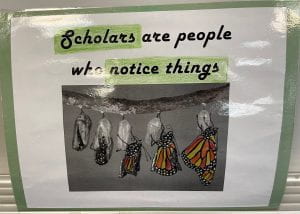





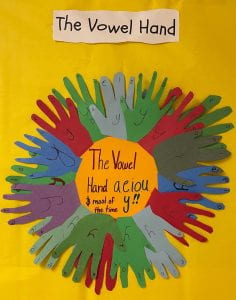

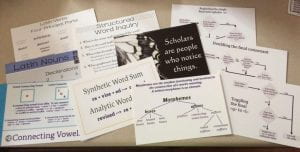
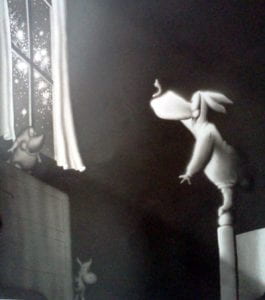

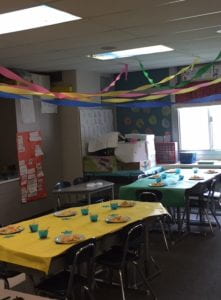
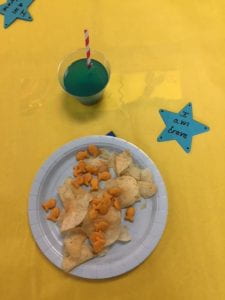
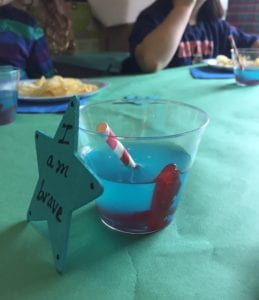
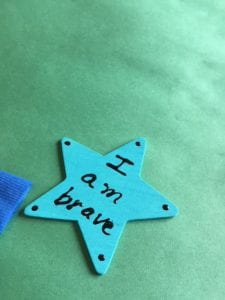
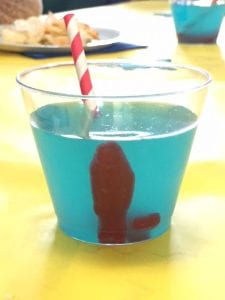
 What a cake!! Yummy!!
What a cake!! Yummy!!